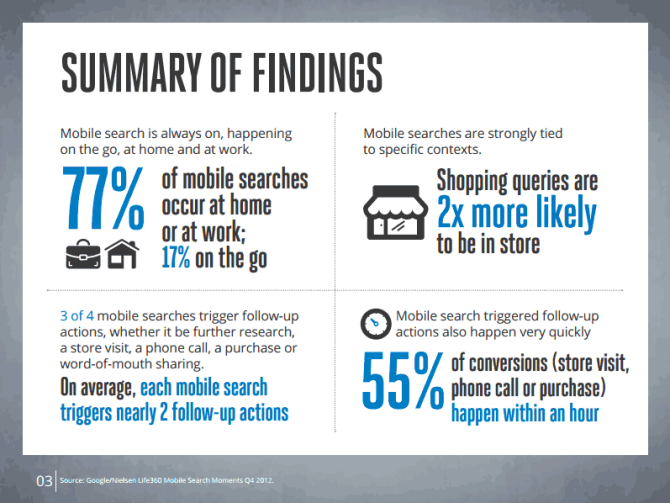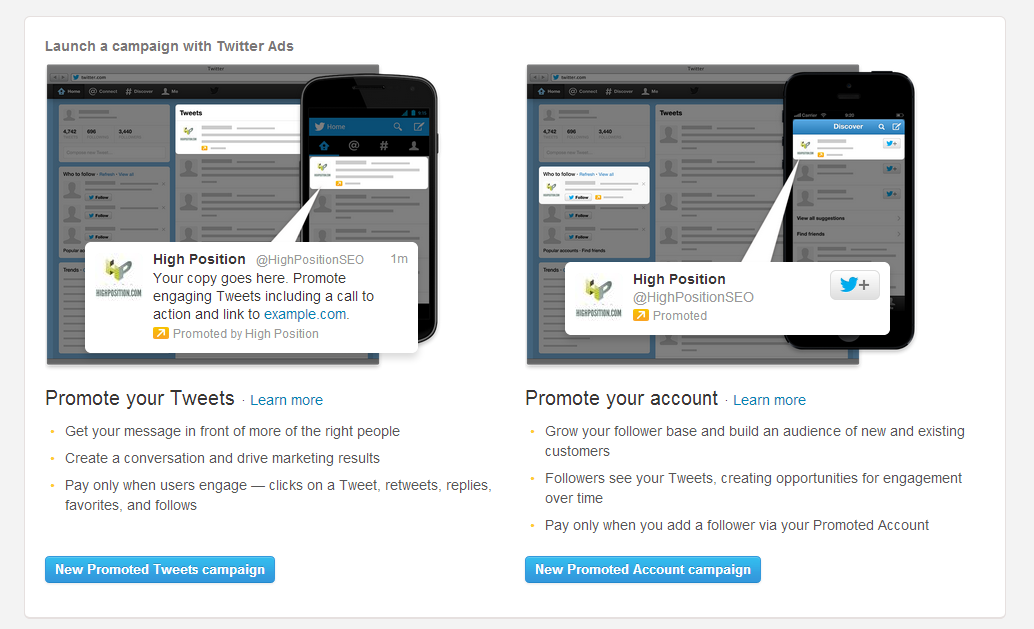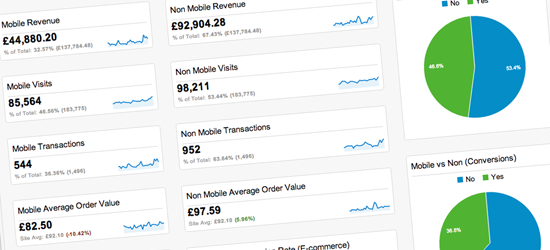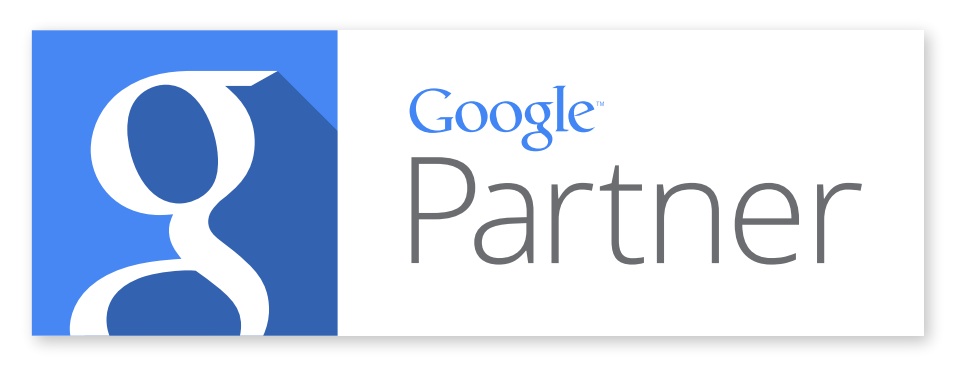If 2013 is anything to go by, this year will be another cracker for digital marketing. With 79% of the EU having internet access in 2013, compared to 55% in 2007 and online traffic from mobile devices increasing by 46% year on year, digital really is becoming the new mainstream as users get hooked on all things online. With dual-screening from our couches and vouchers being pinged to us as we stroll past pizza takeaways, there has never been so much meaning to “being in the right place at the right time” and this year you’ll be able to do exactly that. Read on to find out how and why, as we reveal the top 5 digital marketing trends to watch out for in 2014.
#1. The mobile takeover. It’s here! …Now what?
2013 was the year that marketers really started to sit up and take notice of mobile. We’ve seen responsive site design and email campaigns adapt to offer improved browsing experiences on our mobiles but this really is just the beginning of the mobile takeover. 2014 will see more and more brands getting clever with multi-platform marketing and sequential messaging, as dual-screening becomes a mainstream activity.
Of course, B2C campaigns will evolve ahead of B2B as big brand marketing teams are already working hard to understand how their audiences use different devices and in what circumstances they use them. For instance, as people sit at home watching TV and tweeting about it, this is an obvious opportunity for TV advertisers to ramp up their twitter campaigns and embrace dual screening activity to reinforce marketing messages and have conversations with their audience (conversations that are organic and about topics their audience is interested in).
Whilst we’re on the subject of TV….marketers should now be embracing TV as a digital platform, and step away from treating it as a traditional advertising platform – those who don’t will probably miss out! Why? Marketing Week has delved into the research and MarketShare Partners “suggests that brands enhancing their TV spots with social ads such as promoted tweets lower their Cost Per Acquisition by 38 percent.” Also, “as consumers watch more TV via smartphones and on-demand, marketers will need to adjust their approach.” says Chris Ellis, Group Digital Marketing Manager at Belron, owner of the Autoglass brand.
#2. Getting personal, with the rise of “me-tail”
As consumers become used to engaging with their brands on social platforms, naturally their expectations have evolved to want a more personal, conversational relationship with companies. Whilst we don’t want to be stalked by our favourite brands, Marketing Week reported that consumers are more likely to expect a personal approach from brands - from having polite conversations, with real people, on social media platforms to receiving tailored e-shots that they are (actually) interested in.
This was an intresting snippet: “In fact, 56 percent of consumers say they would be more inclined to use a retailer if it offered a good personalised experience, according to O2 ’s The Rise of Me-tail study. And considering that personalisation could lift sales by 7.8 percent, retailers would be wise to take note.”
Although we know that Apple can predict what people want to listen to and Tesco will send you Clubcard vouchers based on what you’ve bought in store over the last few months. Brands need to embrace that they too have valuable data on current customers and should start to nurture those most loyal relationships, then gradually roll out campaigns to wider segments. If you know that customer A buys item #4 every few months…tell them when it’s on offer and show them what other customers who love product #4 like to buy. (= lots of Brownie points!)
Studies also show that personalising ad campaigns generated a lower CPA and makes for happier, loyal relationships with audiences. Even if advertisers are still working on their data crunching and targeting strategies, organisations can and should also experiment with “Native content”. This means using social advertising to deliver natural looking ads that create demand from “pull” marketing tactics as opposed to “push” marketing. Results show that Click Through Rates improved by 100% as consumers are starting to see through the generic adverts.
#3. Social media ads - for everyone!
Tying in nicely, native content campaigns are now easier than ever to implement as social platforms are keen to cash in on their successful networks. 2013 saw the rollout of sponsored tweets for all brands (big and small!) as well as Google+ starting to dip their toe in sponsored posts and paid for “help outs” using their hangout feature.
Used on a small scale, social advertising can be a very cost effective, budget friendly way for all brands to reach out to new and existing consumers. And, although our previous research has revealed that last click attribution of social media is weak compared to search traffic, we believe that the value of social relations is in the long term, lifetime value of a customer. Early research into our client data shows that companies who updated at least three social channels in a 72 hour time frame, achieved almost twice as many sales that were assisted by social than companies who focused on one or two channels.
Marketing Week also reported that consumers themselves say they are more likely to favour brands that they connect with on social media. Plus, we need to remember that social media doesn’t only mean Facebook, Twitter, LinkedIn or G+. Don’t be afraid to experiment with other channels if your target audience is thriving there. Pinterest, Instagram and even SnapChat or Vine are ones to watch, and can provide great strength to brands that can offer great visual engagement – travel, retail and lifestyle industries take note!
#4. Data is So Hot Right Now!
One thing that these first three trends have in common is that they can be improved and driven by data, and lots of it. From capturing enough individual consumer data and enough collective audience data these segmenting and personalisation decisions can be made, with a little bit of number crunching of course.
At High Position we love data, and we can’t get enough of it. Being a Google Analytics Certified Partner means we get to see Google Analytics (GA) evolve and roll out new features before they go mainstream, and 2013 has really been the year of attribution, multi-channel funnels, as we adopt an approach to measure results that see past last-click value and take note of consumer buying behaviour. This means we can measure the true value of your campaigns…moving towards measuring brand activity and pinning value on this as well as sales and revenue.
To aid this movement, Google has opened up their Analytics Academy to help marketers in any organisation to sharpen up on their analytics and get to grips with what GA really has to offer beneath the surface of page views and bounce rates.
#5. Google will play cupid
2013 witnessed a $3million overhaul of Google’s Partner programme and 2014 is set the be the year that Google works hard to connect smaller organisations with trusted digital marketing agencies. Collectively this agency/SME matchmaking will provide SMEs with a decent slice of online markets that have started to become dominated by big brands with budgets that allow them experiment with digital strategies. Helping SMEs to work with agencies trusted by Google (like High Position!) means their investment in AdWords will be well spent and go the extra mile, avoiding wasting budget on under-optimised accounts simply because an SME can’t learn AdWords inside-out like an agency can.
Google sees the value and opportunities for SMEs now that their targeting options have been taken to the next level (with enhanced campaigns) and they, of course, want more businesses to use them! Plans are in place to roll out a better “Find a Partner” site, which will not only help businesses find PPC agencies but agencies that offer a range of digital marketing services. Part of this drive will revolve around their new partner logo and a #LookForTheBadge campaign to help SME’s easily recognise a trusted agency.
So, 2014 is already shaping up to be an exciting year for Digital Marketing - businesses just need to keep up and embrace the opportunities that will unfold! To get started with a better digital marketing campaign, contact our team of experts today.
Related posts:
















Nice post Rachel, and some really useful links you’ve curated. Thanks for these!